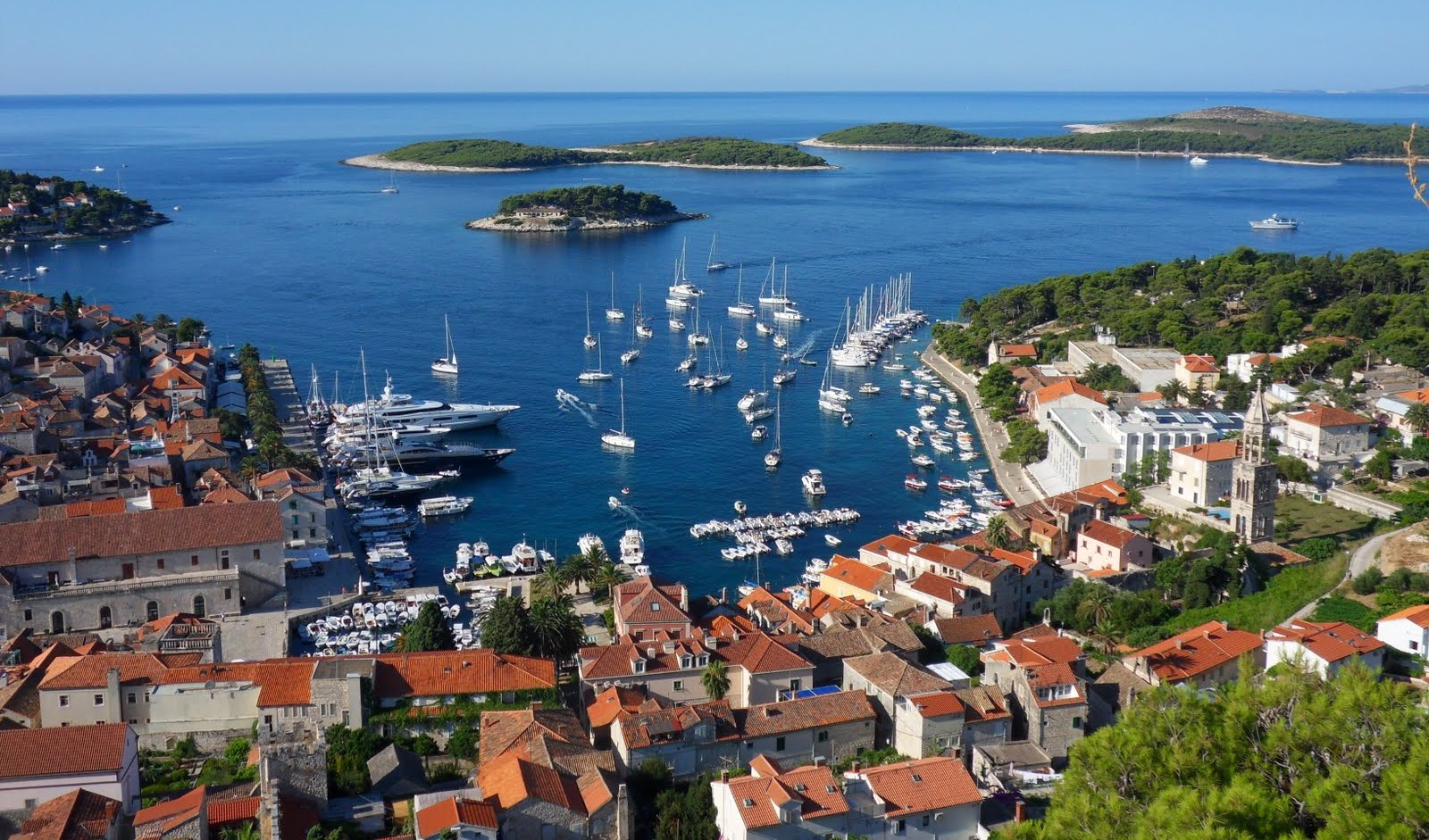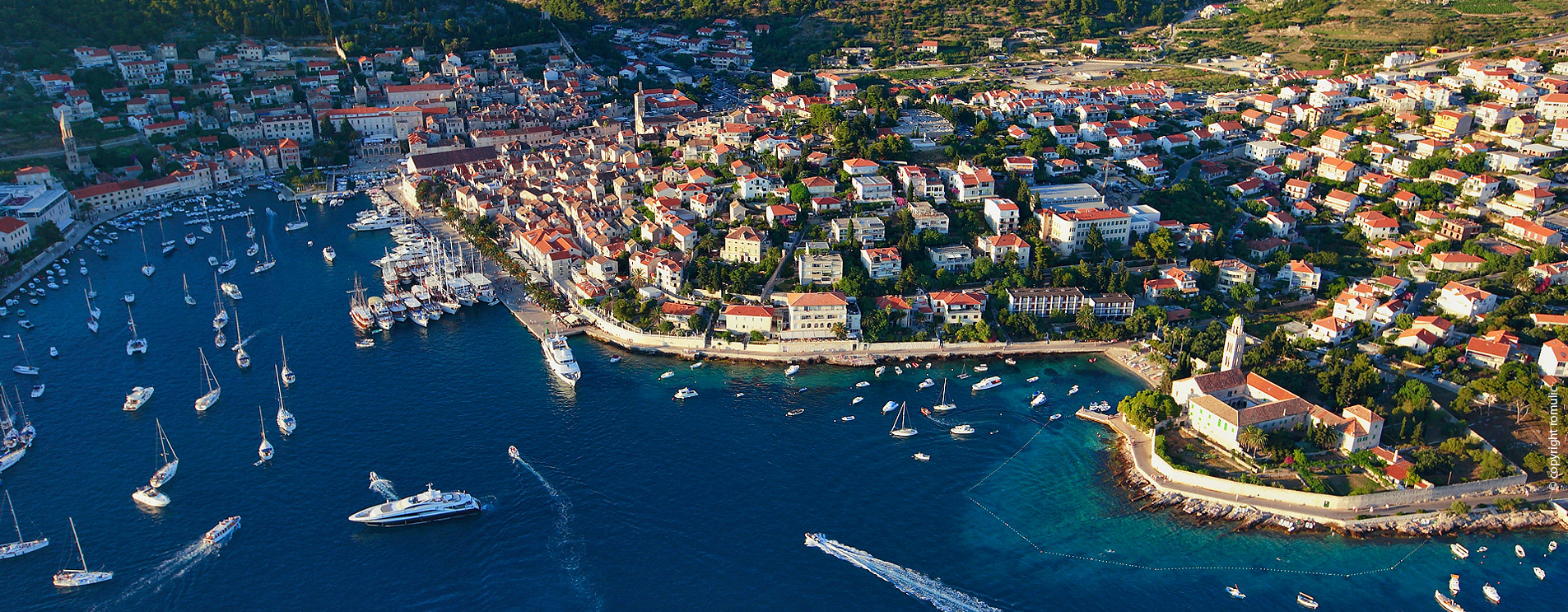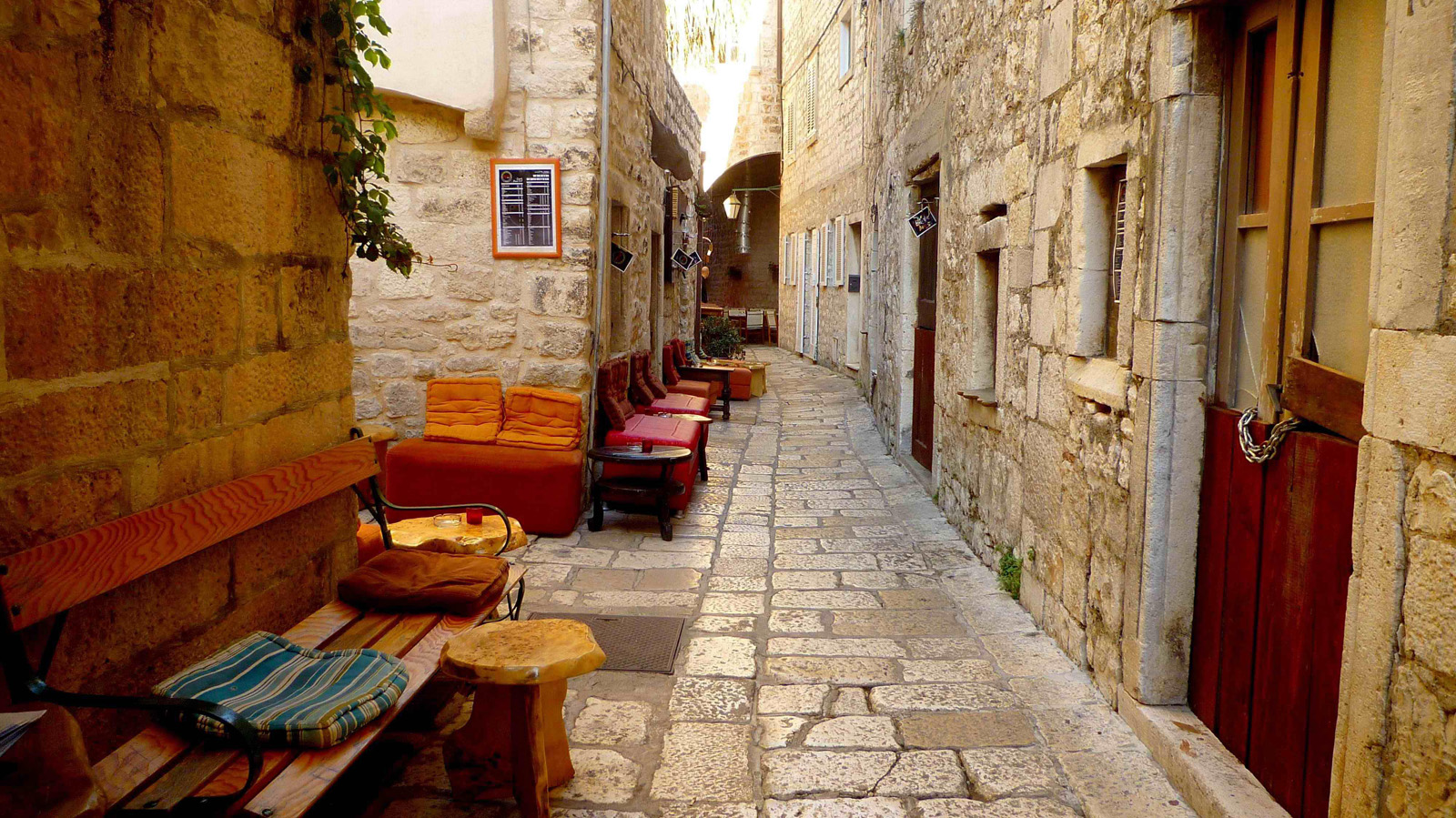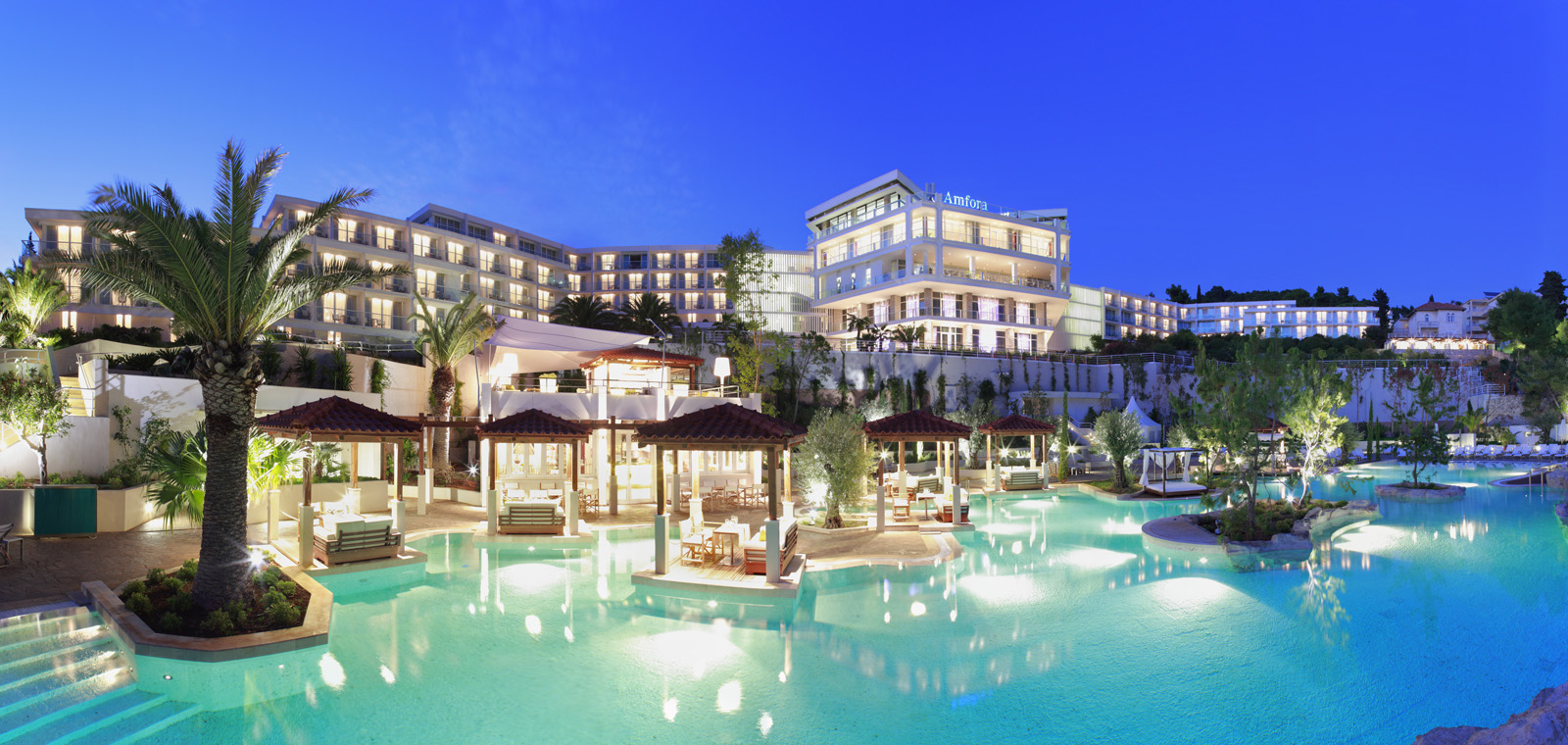Hvar is a city and port on the island of Hvar, part of Split-Dalmatia County, Croatia. The municipality has a population of 4,138 (2001) while the city itself is inhabited by 3,672 people, making it the largest settlement on the island of Hvar. It is situated on a bay in the south coast of the island, opposite from the other nearby towns of Stari Grad and Jelsa.
The city of Hvar has a long and distinguished history as center for trade and culture in the Adriatic. An independent commune within the Venetian Empire during the 13th to 18th centuries, it was an important naval base with a strong fortress above, encircling town walls and protected port.Cultural life thrived as prosperity grew, and Hvar is the site of one of the oldest surviving theatres in Europe, opened in 1612. The seven-century old walls still survive, as do many of the noble houses and public buildings from 15th – 17th centuries.
By the 19th century, the port of Hvar was no longer a military base, and The Hygienic Society of Hvar (Higijeničko društvo u Hvaru) took the economy of the city and the island in a new direction. As one of the earliest “tourist boards” in Europe, it was founded in 1868 with the purpose of providing “good care for visitors”. Today, the city has a variety of hotels, galleries, museums, and exhibitions, including the Arsenal, Loggia, the Croatian Institute, and the Hvar Heritage Museum with its art and archaeological collections.
The port of Hvar, set in a picturesque natural bay, with the Pakleni Otoci island chain protecting it to the south, is a safe haven for boats year round. The city is a popular port of call for yachts sailing around the Adriatic, especially in the summer months. There are regular catamaran ferry services from the port between Hvar and Split, Brač, Korčula, Lastovo, and Vis.
The municipality of Hvar covers 7,535 ha, including the town itself and the settlements of Brusje (pop. 206), Velo Grablje (pop. 21), Milna (pop. 90) and Sveta Nedilja (pop. 148). The old settlements of Malo Grablje and Zaraće are no longer inhabited. Population figures from the 2001 Census
The town is located in a small bay on the south coast of the island of Hvar, towards the western end. The surrounding land is karst hillside, rising steeply from the Adriatic Sea. The rocks in the area are porous, mainly limestone and dolomite, so ground water is scarce. However there is some agriculture where the terrain is sufficiently accessible, and can be irrigated, such as olive groves, vineyards, lavender, rosemary.
The mountain range that stretches the length of the island acts as an effective barrier between Hvar town and the settlements to the north. In centuries past, it would have taken several hours to walk overland, or sail around the coast. The modern Stari Grad to Hvar road, with its new tunnel (opened in 2000), now provides quick and easy access between the north and south.
The coastline is mostly steep and indented, with small gravel beaches in the bays. The Pakleni Otoci and the island of Galešnik at the entrance to the port of Hvar are protected landscape areas.
Climate
| Hvar (Town of Hvar) | ||||||||||||||||||||||||||||||||||||||||||||||||||||||||||||
|---|---|---|---|---|---|---|---|---|---|---|---|---|---|---|---|---|---|---|---|---|---|---|---|---|---|---|---|---|---|---|---|---|---|---|---|---|---|---|---|---|---|---|---|---|---|---|---|---|---|---|---|---|---|---|---|---|---|---|---|---|
| Climate chart | ||||||||||||||||||||||||||||||||||||||||||||||||||||||||||||
|
||||||||||||||||||||||||||||||||||||||||||||||||||||||||||||
|
||||||||||||||||||||||||||||||||||||||||||||||||||||||||||||
Hvar town enjoys a sunny Mediterranean climate, typical of the southern Adriatic, with mild wet winters and hot dry summers. For the months of June to September, the average temperature is higher than 20 °C (68 °F), dropping below 10 °C (50 °F) in just two months of the year (January and February). Winter days see high between 10 to 18 °C (50 to 64 °F) and lows from 4 to 10 °C (39 to 50 °F). Daytime high temperatures in the summer months range from 27 to 34 °C (81 to 93 °F) and from 18 to 25 °C (64 to 77 °F) for the overnight lows.
During the summer, the westerly mistral wind blows through the Pakleni channel, providing welcome cooling during the day. Rain is rare here during spring and summer, though plentiful in autumn and winter months. Light snow occurs on average once every ten years, however, it does not stay on the ground long.
The average monthly temperature of the sea, from June through October, is 20 °C (68 °F). It is not unusual for the sea temperature to reach more than 27 °C (81 °F). The sea is always warmer than the air, except during the summer months. The current usually comes from the south-east.





